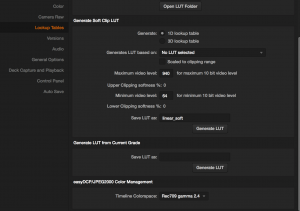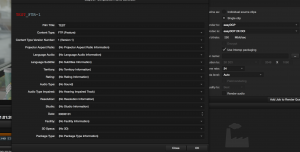Last night at the Boston Creative Pro User Group meeting, Juan Salvo gave a fantastic presentation on Digital Cinema Packages, or more commonly known as DCPs. I was lucky enough to be able to attend and was blown away by Juan’s massive amount of knowledge on the topic. Basically, DCPs are becoming the standard for delivery to theaters with digital projection. With film slowly dying out, there is a need for a new standard, and that new standard is DCP.
The presentation started off with the basics – the changing of color space, JPEG2000 codec, and methods of delivery. All things that I was already familiar with, but a very good reminder and refresher. Where things got really interesting for me was when Juan made an actual DCP on DaVinci Resolve 10 as part of his presentation.
The first (and probably one of the most important) things to do when creating a DCP within Resolve is to make sure that you know and recognize what your timeline colorspace is. In the Project Settings, within the LUT menu, at the very bottom of the screen there is a “Timeline Colorspace” option. It is essential that this setting matches your footage.
It’s important to note that Resolve has dumbed this down a little bit. They provide you with a couple of options that are rather simplified. A lot goes into creating and converting these files, and it’s not nearly as simple as it seems.
After making sure your settings are correct for DCP export a quick bounce over to the deliver page gives you an option for DCP output. The type of file that is exported can effect aspect ratios, so it’s very important to play close attention to those. File naming can also play a large role in organization. And don’t forget about audio! According to Juan, surround sound plays very nicely with DCPs, but you have to be careful with stereo tracks, since hiccups can happen quite easily. Dialogue on the center track should make sure that you are in the clear on most projects.
One of the biggest caveats with DCPs is that there is really no way to view them once they are created except within a theatre that has an actual DCP compatible projector. So, as Juan would say, “Make friends with your local projectionist”. If you have the ability to bring your DCP to a nearby theatre you can check that your conversion to the JPEG2000 codec was done correctly.
This blog posting is a very quick, down and dirty recap of what happened last night as I recall the events off the top of my head. In the near future, the BOSCPUG will be posting the entire presentation online and I’ll be sure to provide the link – it’s a really interesting watch.
Great job, Juan! Thanks for shedding some light on the topic.


